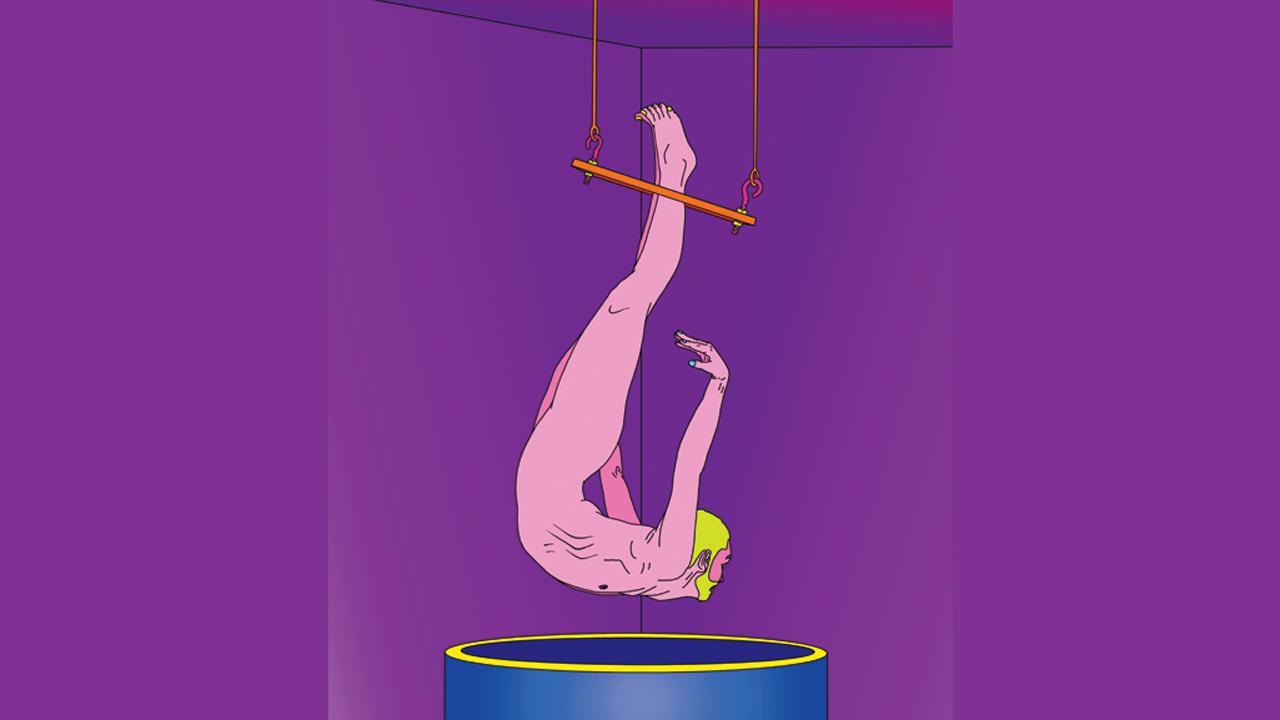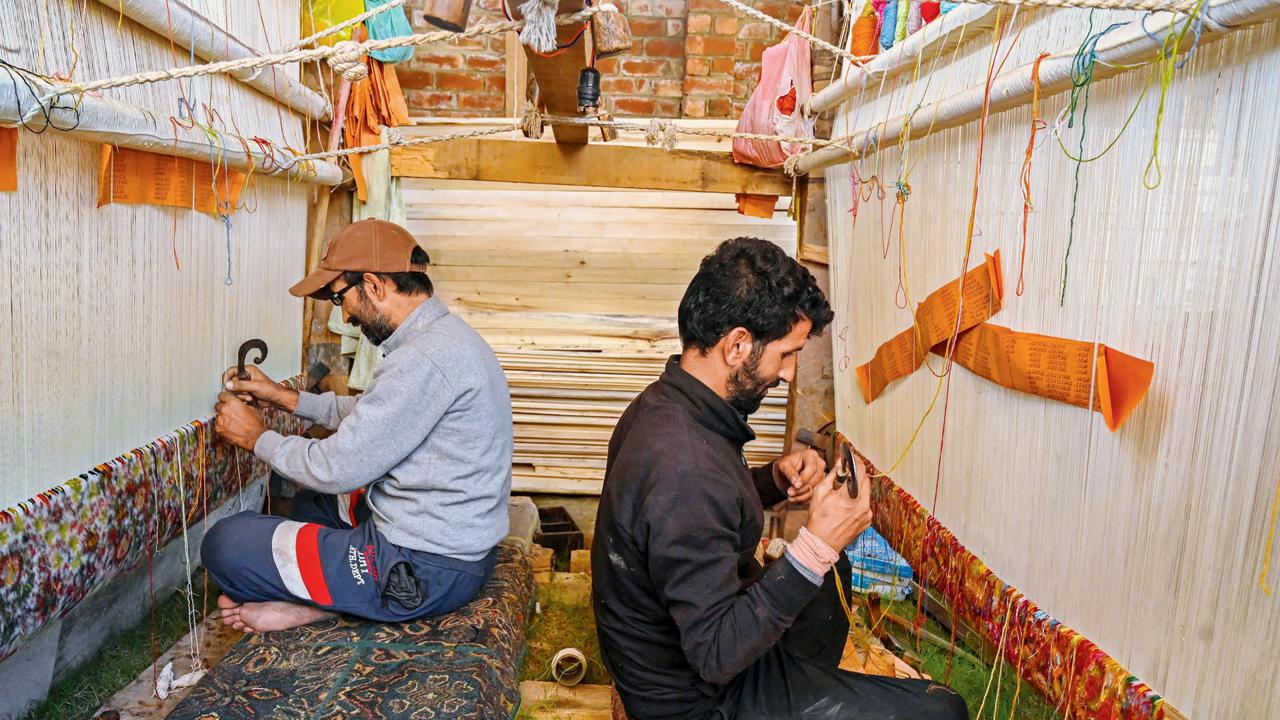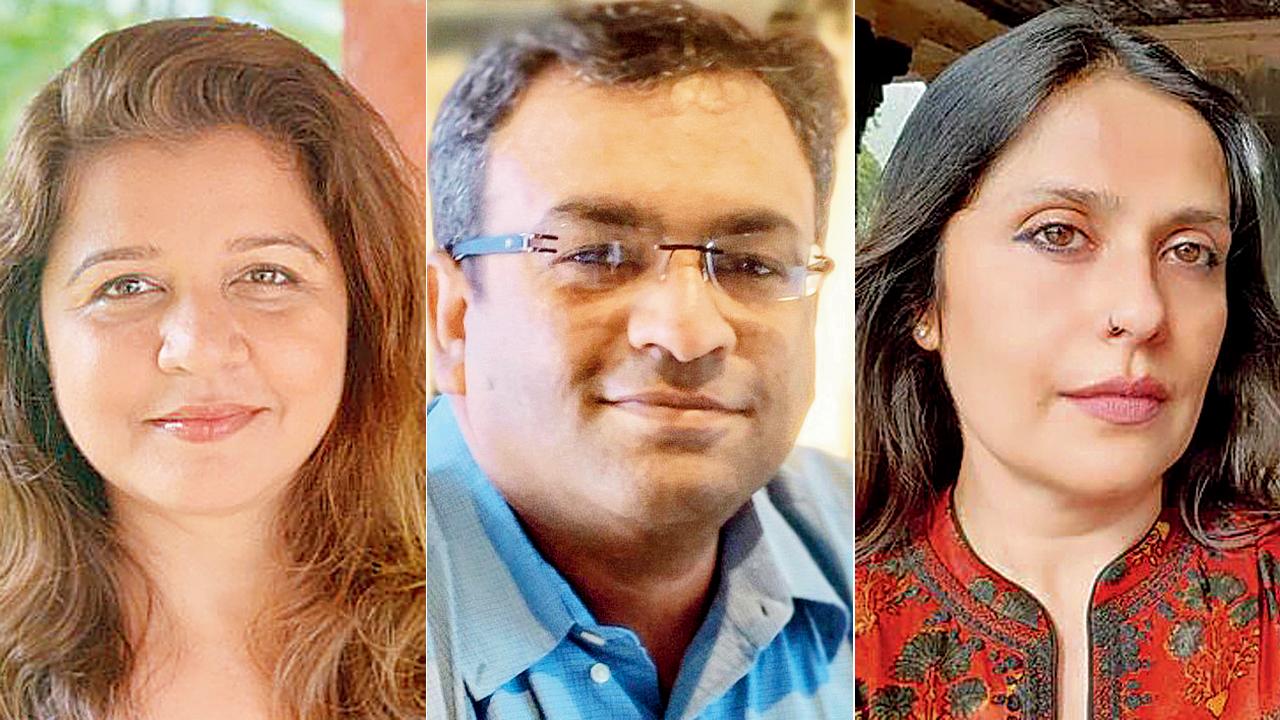With UNESCO offering Srinagar entry into the coveted 295 creative cities network, artists and urban planners discuss what made it eligible and why it’s an opportunity for the crafts to thrive

Artist Syed Mujtaba Rizvi’s work titled Graceful in my misery. Founder of Kashmir’s first art initiative, Kashmir Art Quest, Rizvi has been trying to create a global conversation about Kashmir’s art, people, society and politics
In 2018, Kashmiri artist Syed Mujtaba Rizvi helmed an exhibition titled Concourse, which featured the works of over 60 artists, in the century-old filature at Srinagar’s historic silk factory. What lent gravitas to the event was the fact that it brought together artists from the estranged Kashmiri Pandit and Muslim communities, many of whom were visiting their birthplace after an inordinately long time. “There were some second and third generation Kashmiris whose parents and grandparents had fled during the exodus of 1989 and were now visiting their ancestral land for the first time,” says the 33-year-old. It was the last major art event that Srinagar witnessed.
ADVERTISEMENT
But apparently that lull hasn’t made a dent in the city’s reputation as an arts and craft destination.
 Syed Mujtaba Rizvi
Syed Mujtaba Rizvi
Last month, the United Nations Educational, Scientific and Cultural Organisation (UNESCO) designated Srinagar as part of the UNESCO Creative Cities Network (UCCN) under the Craft and Folk Arts category. With this, the capital city of Jammu and Kashmir has entered the club of 295 creative cities network across the world. After Mumbai, Chennai, Hyderabad, Varanasi and Jaipur, Srinagar is the sixth Indian city to achieve this distinction.
Created in 2004, the UCCN fosters international cooperation across cities of the world that invest in culture and creativity as accelerators of sustainable development. This is done through seven creative fields—crafts and folk art, design, film, gastronomy, literature, media arts, and music. As of the 2021, a maximum of two applications from the same country, and in two different creative fields, can be eligible for designation.
 Traditional Kashmiri artisans seen weaving silk carpets at a factory in Srinagar. Pic/Getty Images
Traditional Kashmiri artisans seen weaving silk carpets at a factory in Srinagar. Pic/Getty Images
Incidentally, Srinagar had made its first application in 2018. “The civic authorities persisted and reapplied after roping in INTACH as consultant,” says Aparna Dubey, founder of independent consulting practice Changing Orbits, where she works with companies to enhance the business model. “They also involved many other government bodies and departments to present a comprehensive application. The new application emphasised the long history, heritage, and development of Srinagar’s unique art and crafts industry. Thanks to this perseverance, Srinagar has now joined the ranks of global cities like Cairo, Chiang Mai, and Santa Fe.”
The work done by Rizvi’s Kashmir Art Quest, a contemporary art foundation launched in 2010, that has showcased the works of over 200 senior and emerging artists across the world, was also included in the application that was sent to the UN body.
 Aparna Dubey, Pranav Iyer and Abha Narain Lambah
Aparna Dubey, Pranav Iyer and Abha Narain Lambah
The abrogation of Articles 370 and 35(A) that gave the state its special status in 2019, followed by the onslaught of the Coronavirus pandemic, have dealt a severe blow to the arts scene in Kashmir, observes Rizvi, who was one of the many young entrepreneurs to move out of the state in search of better prospects in the last two years. “Unless this recognition translates into something tangible on ground, it means little at this point,” he says.
But Dubey is more hopeful. The achievement as a UCCN city is an opportunity for Srinagar to not just revive, but thrive, she believes. “A long term vision will require comprehensive collaborative efforts that include development of microfinance, skill development, e-commerce, digital marketing, and capacity building.”
Meanwhile, the Jammu and Kashmir government has appointed conservation architect Abha Narian Lambah to begin the restoration of two Mughal Gardens, Nishat Bagh and Shalimar Bagh, in collaboration with the JSW Foundation. According to Lambah, the recognition is a nod to Srinagar’s rich history which predates the Mughals. “When Timur [Gurkani; Turko-Mongol conqueror] invaded Persia, a lot of Persians migrated to Kashmir. They brought with them a gamut of crafts, such as woodcrafts, shawl making, embroidery and papier mache during the reign of Sultan Zain-ul-Abidin [1421 AD to 1474 AD].” Lambah, whose grandfather lived in an ancient timber-framed house in Srinagar, has fond memories of roaming the bylanes of Zaina Kadal (Zain’s bridge) in Shaher-e-Khaas. “At every corner, you’d see a craftsman creating beaten metal utensils. My aunt used to deal in carpets, and she had taken me to a workshop where the artisan would read out the pattern to fellow artists in a sing-song voice.” During Mughal emperor Akbar’s rule, there were 40,000 carpet and shawl workshops in operation, as recorded in the Ain-i-Akbari or the Administration of Akbar, a 16th-century document recording the workings of the Mughal Empire, written by his court historian Abu’l Fazl.
Architect Pranay Iyer, Design Principal at Ground 11 Architects, thinks that the exclusion that has plagued Srinagar for decades, may have also allowed it to enrich its urban fabric with a unique identity. “Though not physically ‘enclosed’, Srinagar has largely escaped globalisation that sweeps across most cities and cultures, and what remains depends entirely on the depth of its cultural roots. Srinagar has been like a beautiful tree growing in a pot. Over several decades, its roots have become denser since it has not been able to really be a part of the orchard that is India in terms of interaction with the rest of the country. This period of gestation has allowed it to enrich itself with its own identity, culture and creativity,” he explains.
 Subscribe today by clicking the link and stay updated with the latest news!" Click here!
Subscribe today by clicking the link and stay updated with the latest news!" Click here!







